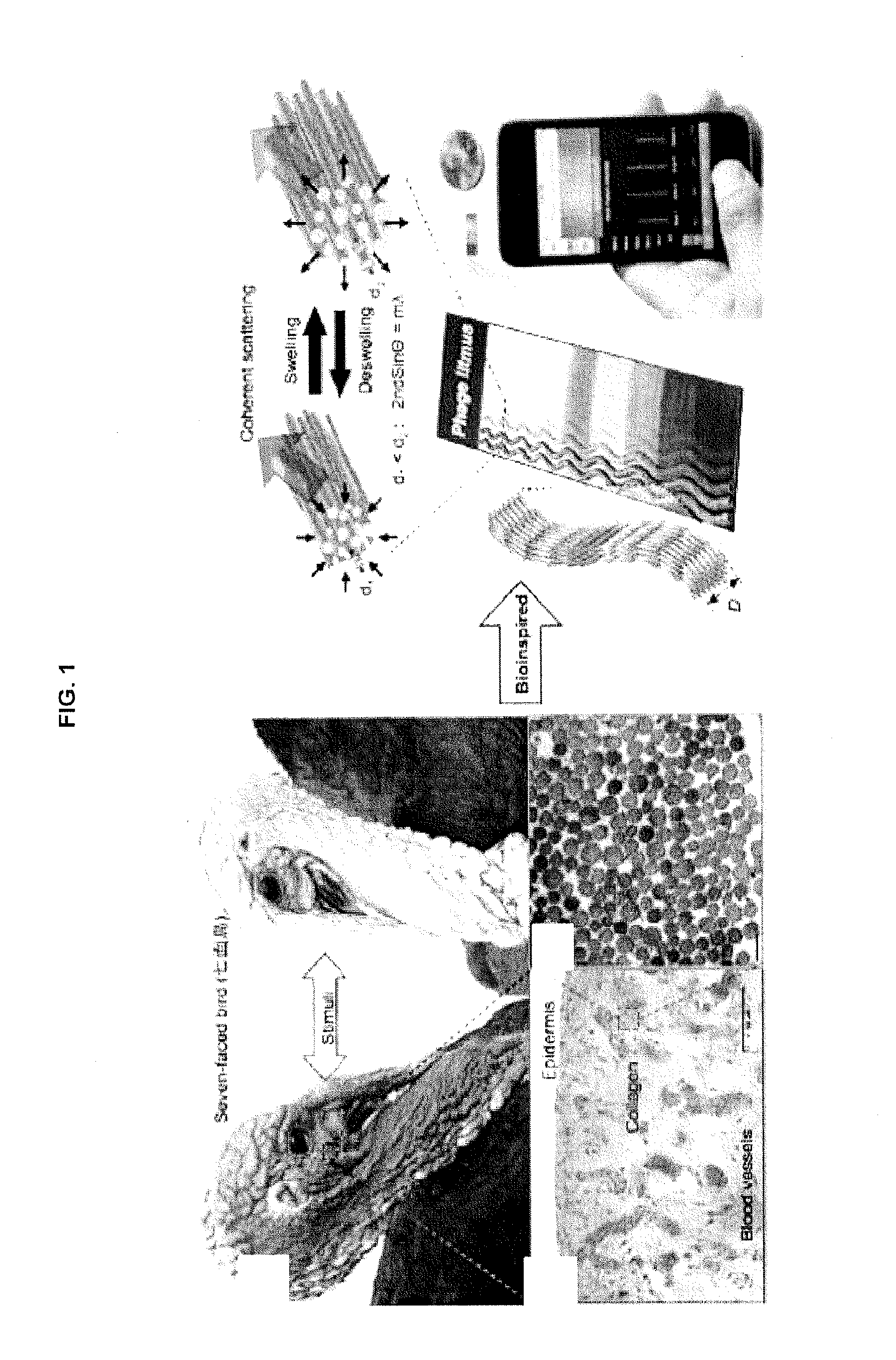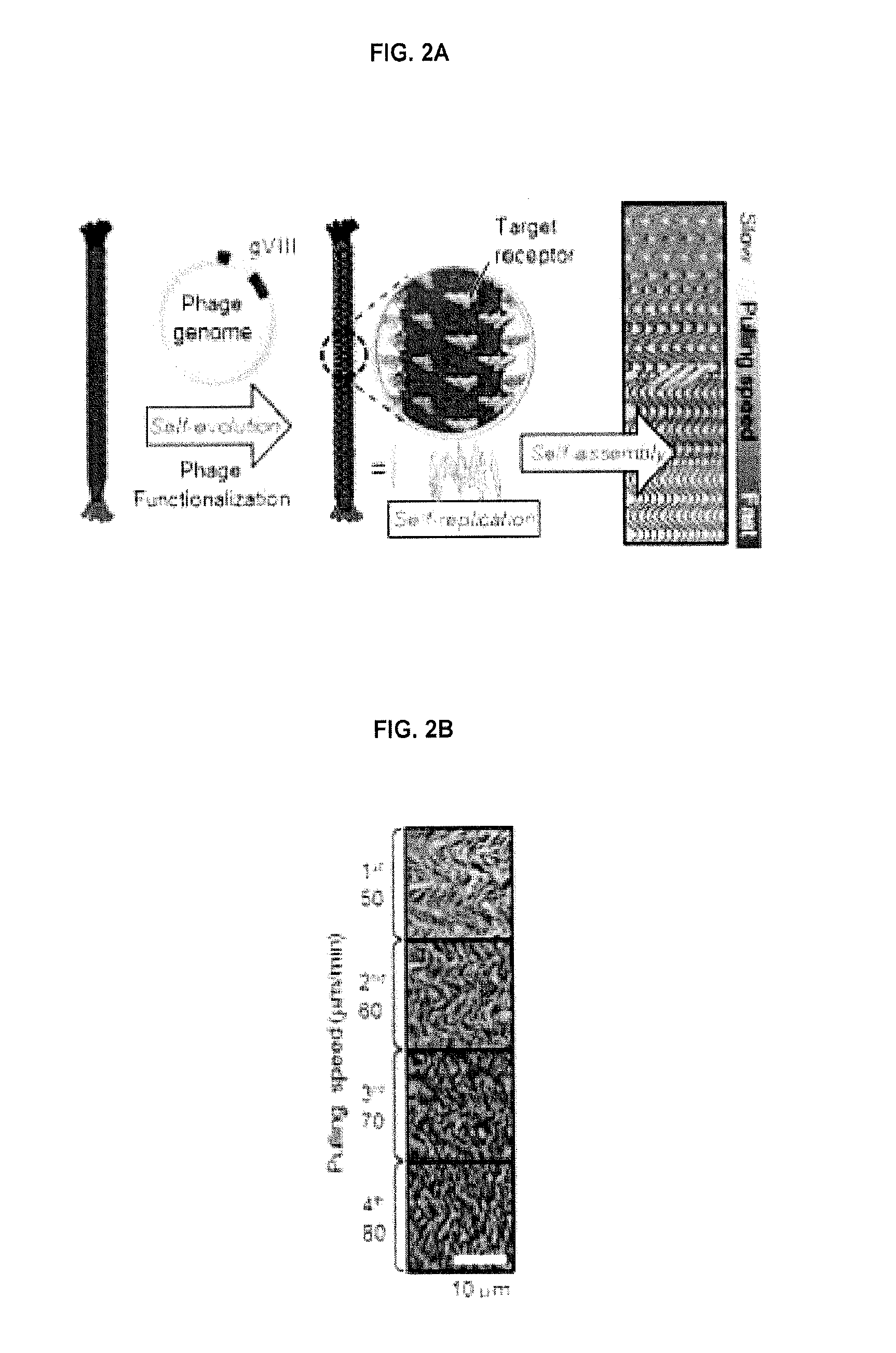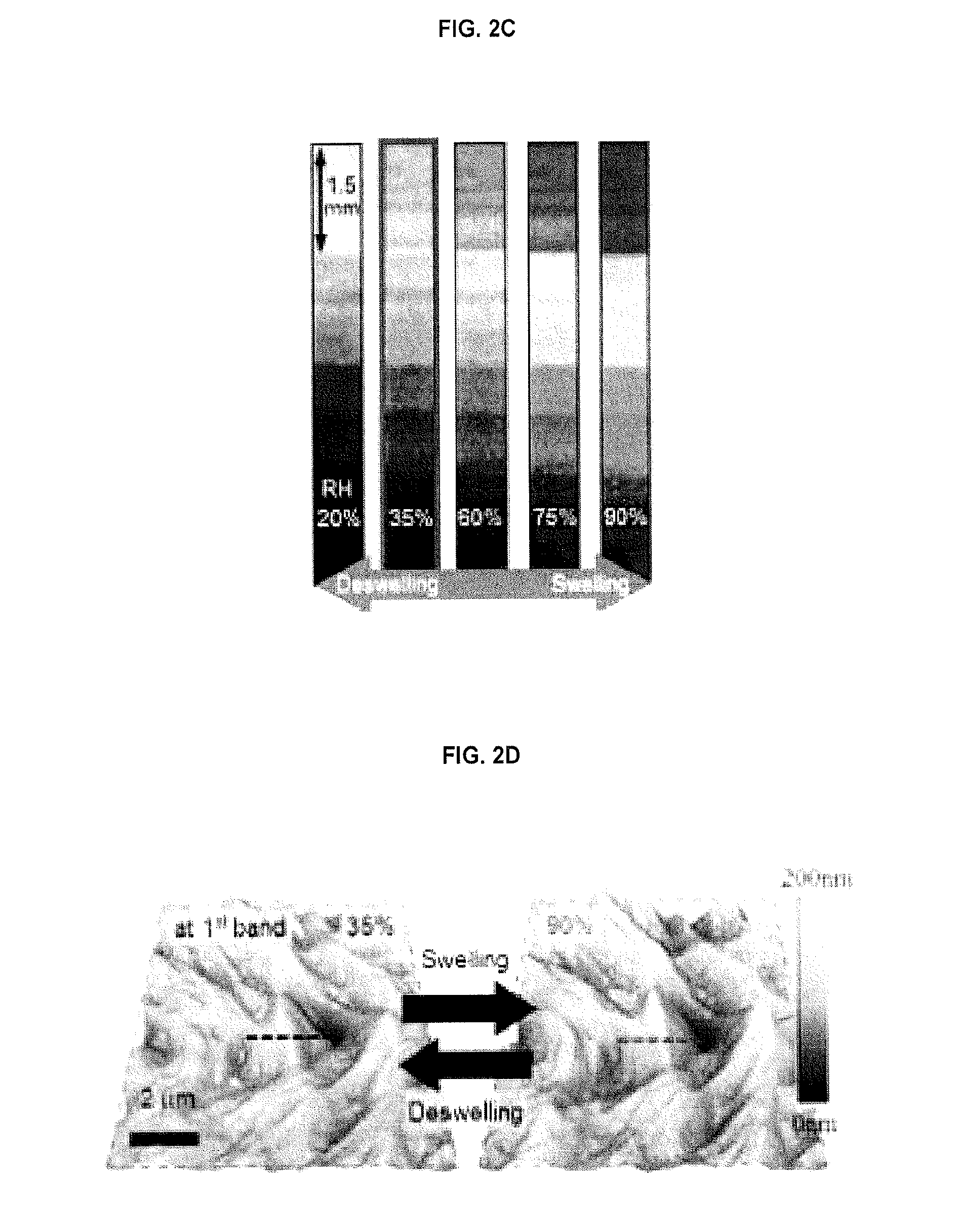Biomimetic virus-based colorimetric sensors
a colorimetric sensor and biomimetic virus technology, applied in the field of sensors, can solve the problems of complicating analysis, poor selectivity against analytes with similar chemical structures, and difficulty in incorporating analyte-responsive elements into the sensing device,
- Summary
- Abstract
- Description
- Claims
- Application Information
AI Technical Summary
Benefits of technology
Problems solved by technology
Method used
Image
Examples
example 1
Biomimetic Virus-Based Colorimetric Sensors
[0218]We constructed a bioinspired, colorimetric sensing material composed of filamentous bacterial viruses (M13 phage) as depicted in FIG. 1. Tunable phage-based structures fabricated using a self-templating assembly process are composed of quasi-ordered phage bundle nanostructures and exhibit viewing-angle independent colors25. These films mimic the structure of turkey skins (M gallopavo, Pitman Farms, Sanger, Calif.), which are structurally colored blue due to coherent scattering of light from collagen bundle-based nanostructures (FIG. 1a-c)11. Arrays of differently colored phage matrices, termed Phage litmus (FIG. 1d), rapidly swell or shrink upon exposure to external chemicals, resulting in color changes similar to those seen on turkeys when they get flustered (FIG. 1a). The chemicals are identifiable through color pattern analyses in a quantitative manner. To enhance selectivity, a trinitrotoluene (TNT)-binding motif identified by pha...
example 2
[0237]Methane sensing targeted designed phage: We designed phage specifically for the detection of methane by engineering dioxyphenylalanine (DOPA) onto the phage major coat protein. First, we genetically expressed tyrosine (Y) on the major capsid p8 protein. Tyrosine was enzymatically converted to DOPA by tyrosinase (See FIG. 32 and task section for details). The resulting DOPA-phage strongly interacted with various organic and inorganic materials, allowing us to fabricate composite nanostructured films composed of DOPA-phage and transition metal or transition metal nanoparticles. A Pt-DOPA phage colorsensor (PC) was fabricated and we tested its colorimetric response to methane. Using methane gas, we alternated an 8 second exposure of 50 mL / min with a 25 second evacuation to ambient conditions. As shown in FIG. 31, repeated exposure to methane induced fast and reproducible colorimetric responses on the Pt-DOPA PC.
[0238]Engineered phages with rational designed receptors to detect me...
PUM
| Property | Measurement | Unit |
|---|---|---|
| RH | aaaaa | aaaaa |
| diameter | aaaaa | aaaaa |
| viewing angles | aaaaa | aaaaa |
Abstract
Description
Claims
Application Information
 Login to View More
Login to View More - R&D
- Intellectual Property
- Life Sciences
- Materials
- Tech Scout
- Unparalleled Data Quality
- Higher Quality Content
- 60% Fewer Hallucinations
Browse by: Latest US Patents, China's latest patents, Technical Efficacy Thesaurus, Application Domain, Technology Topic, Popular Technical Reports.
© 2025 PatSnap. All rights reserved.Legal|Privacy policy|Modern Slavery Act Transparency Statement|Sitemap|About US| Contact US: help@patsnap.com



